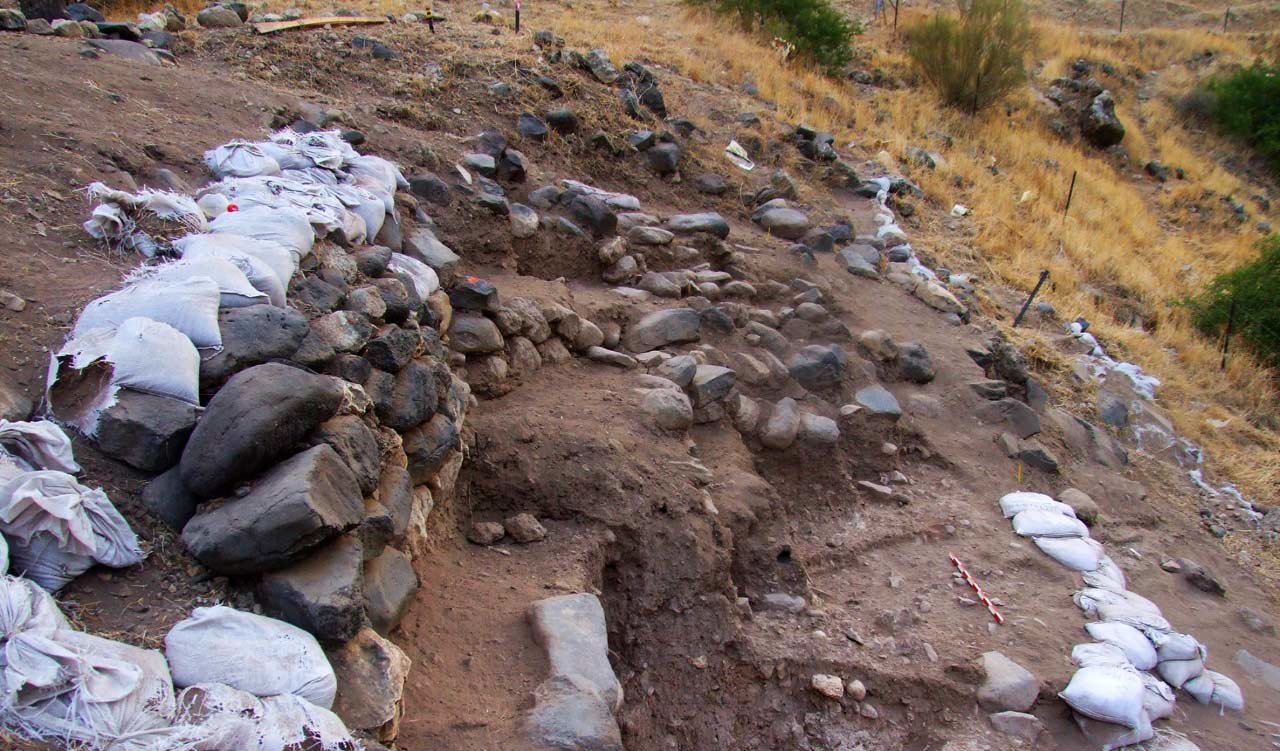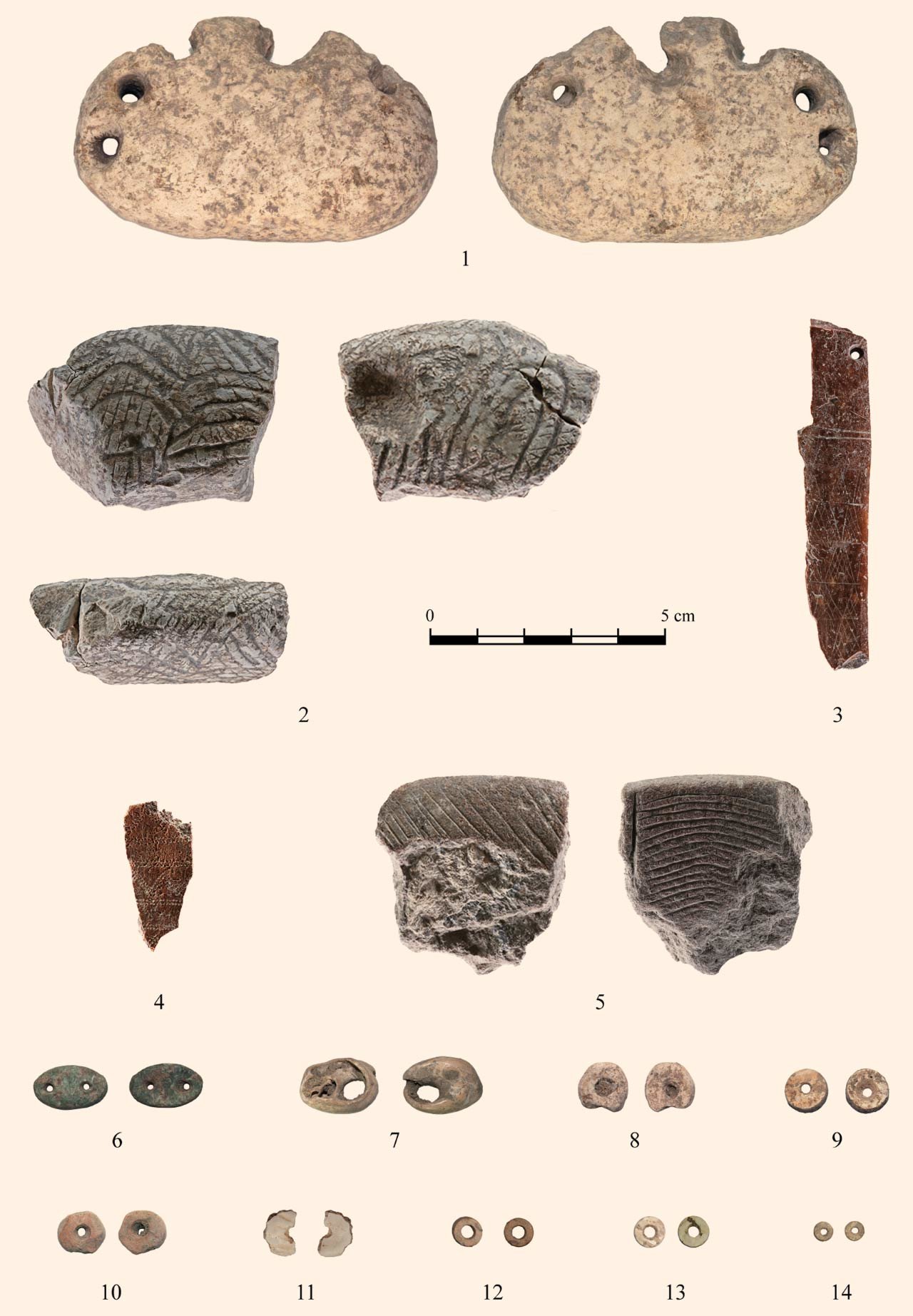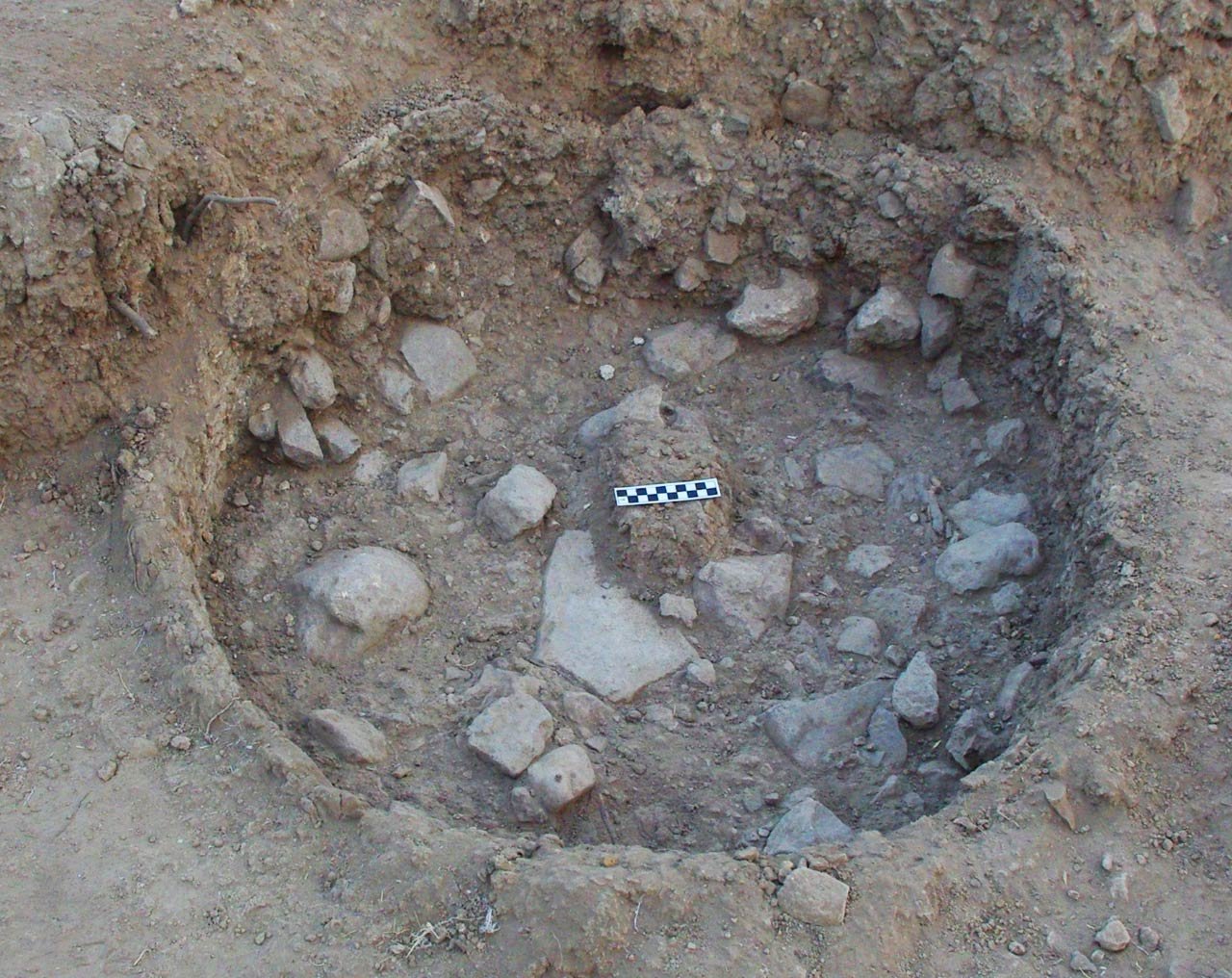
"Nahal Ein Gev II (NEG II) is located in Nahal (wadi) Ein Gev, at the middle of a perennial stream that flows west to the Sea of Galilee," said team member Dr. Leore Grosman, from the Hebrew University of Jerusalem.
"The site is situated on a flat alluvial terrace on the right bank of a prominent meander in the streambed about 2 km east of the Sea of Galilee at the Natufian times."
At NEG II, the archaeologists found human remains, flint tools, faunal assemblage, ground stone and bone tools.
A rich art assemblage including personal ornaments, modeled limestone items and engraved bone and stone objects was retrieved from the site.
"Of the 210 personal ornaments recovered from the site, the majority are beads, mainly disc- or cylindrical-shaped," the scientists said.
"In addition to the personal ornaments, 20 complete and fragmented art objects were recovered."
"Two unique incised stone objects are worth mentioning. The first is a fragment of a limestone object decorated with a linear pattern on all three of its preserved faces. The decorative lines cover the object's entire surface. The linear patterns are slightly different on each face, but all include deeply incised curved lines overlapped by a second layer of more delicate straight lines. The depth and density of the lines suggest a three-dimensionally carved object, although the decorative approach is two-dimensional."
"On one face, a wave-pattern was created by a parallel series of horizontally arced lines. On the opposite face a set of curved lines arranged in a vertical-oblique direction transforms the stone surface into a wavy textured relief. The direction of the peak of the arc is altered every few lines. On the third, narrow face, the delicate lines are better preserved than the deep parallel incisions with an oblique orientation."
"The second incised stone object is carefully shaped by polish. Linear patterns are engraved on both faces - on one there is a series of diagonal lines and on the other a dense group of curved lines that emanates from a slightly deeper straight line."
The researchers said: "the excavated area revealed an extensive habitation with deep cultural deposits (2.5 to 3 m deep) and the site is estimated as covering roughly 1,200 sq.m. Surprisingly, the village differs markedly from others of its period in Israel."
"Although attributes of the lithic tool kit found at NEG II places the site chronologically in the Paleolithic period, other characteristics - such as its artistic tradition, size, thickness of archaeological deposits and investment in architecture - are more typical of early agricultural communities in the Neolithic period," said Dr. Grosman, who is the lead author of a paper published online in the journal PLoS ONE.
"Characterizing this important period of potential overlap in the Jordan Valley is crucial for the understanding of the socioeconomic processes that marked the shift from Paleolithic mobile societies of hunter-gatherers to Neolithic agricultural communities," he said.
NEG II was occupied in the midst of the cold and dry global climatic event known as the Younger Dryas (10,900 - 9,600 BC), where temperature declined sharply over most of the northern hemisphere. Affected by climatic changes, Late Natufian groups in the Mediterranean zone became increasingly mobile and potentially smaller in size.
However, excavations at NEG II show that groups in the Jordan Valley became more sedentary and potentially larger in size.

"In addition, the thick archaeological deposits, the uniformity of the tool types and the flint knapping technology indicate intensive occupation of the site by the same cultural entity."
This shift in settlement pattern could be related to greater climatic stability due to a lesser effect of the Younger Dryas in the region, higher cereal biomass productivity and better conditions for small-scale cultivation.
Reference: Grosman L. et al. 2016. Nahal Ein Gev II, a Late Natufian Community at the Sea of Galilee. PLoS ONE 11 (1): e0146647; doi: 10.1371/journal.pone.0146647




for a long time.